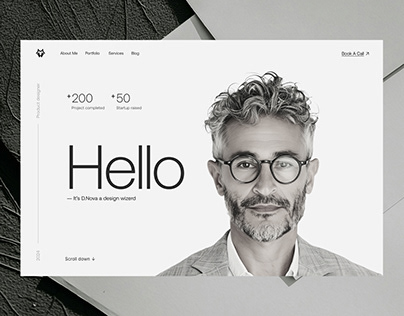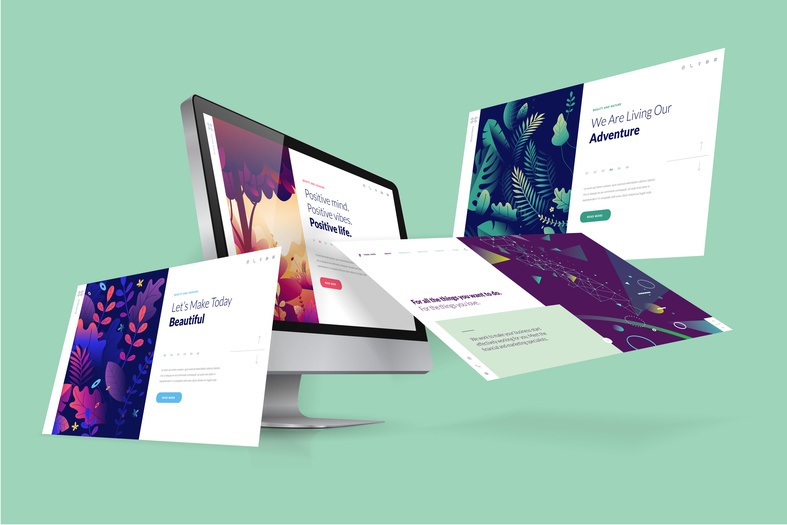Website Design Concepts to Improve User Interest
Website Design Concepts to Improve User Interest
Blog Article
Important Principles of Website Layout: Producing User-Friendly Experiences
By concentrating on user requirements and choices, designers can promote engagement and satisfaction, yet the ramifications of these concepts extend beyond plain performance. Recognizing how they link can considerably affect a website's total efficiency and success, motivating a better examination of their specific functions and collective impact on individual experience.

Significance of User-Centered Style
Focusing on user-centered layout is necessary for producing efficient websites that satisfy the requirements of their target audience. This technique places the individual at the center of the layout process, guaranteeing that the site not only operates well yet likewise resonates with individuals on a personal degree. By understanding the customers' goals, choices, and habits, designers can craft experiences that cultivate involvement and satisfaction.

Additionally, embracing a user-centered style approach can result in boosted access and inclusivity, satisfying a varied audience. By taking into consideration different customer demographics, such as age, technological effectiveness, and social backgrounds, designers can develop internet sites that rate and practical for all.
Eventually, prioritizing user-centered style not only boosts individual experience but can additionally drive crucial company results, such as enhanced conversion rates and client loyalty. In today's affordable digital landscape, understanding and focusing on user requirements is a crucial success aspect.
Intuitive Navigation Frameworks
Efficient site navigating is usually an essential consider boosting individual experience. User-friendly navigation structures make it possible for individuals to locate info swiftly and effectively, reducing frustration and enhancing interaction. A well-organized navigation menu must be easy, logical, and consistent across all web pages. This permits users to prepare for where they can locate particular content, therefore advertising a seamless browsing experience.
To produce intuitive navigation, designers need to prioritize clearness. Labels must be familiar and detailed to users, avoiding jargon or ambiguous terms. An ordered structure, with key classifications resulting in subcategories, can even more aid individuals in understanding the partnership between different sections of the website.
In addition, integrating visual signs such as breadcrumbs can guide users through their navigating course, enabling them to conveniently backtrack if required. The inclusion of a search bar likewise enhances navigability, granting customers guide accessibility to content without having to navigate via multiple layers.
Flexible and responsive Layouts
In today's digital landscape, making certain that sites work seamlessly throughout various gadgets is necessary for customer contentment - Website Design. Receptive and flexible formats are 2 vital approaches that allow this functionality, catering to the varied series of screen dimensions and resolutions that customers may come across
Responsive layouts employ fluid grids and versatile images, allowing the web site to immediately readjust its aspects based upon the display measurements. This method provides a consistent experience, where content reflows dynamically to fit the viewport, which is specifically advantageous for mobile individuals. By utilizing CSS media questions, designers can create breakpoints that enhance the design for various tools without the need for different designs.
Adaptive layouts, on the other hand, check my site use predefined layouts for specific display dimensions. When an individual accesses the website, the server detects the gadget and serves the appropriate format, making certain an optimized experience for varying resolutions. This can result in much faster packing times and improved efficiency, as each design is tailored to the device's capacities.
Both flexible and receptive layouts are essential for enhancing individual engagement and contentment, inevitably adding to the site's general performance in satisfying its objectives.
Consistent Visual Pecking Order
Establishing a consistent aesthetic pecking order is pivotal for directing users via a site's content. This concept makes sure that details exists in a fashion that is both instinctive and engaging, permitting users to quickly browse and understand the material. A well-defined hierarchy utilizes different design components, such as dimension, comparison, color, and spacing, to create a clear difference in between different types of content.

Additionally, constant application of these aesthetic cues throughout the internet site fosters familiarity and depend on. Users can promptly learn to recognize patterns, making their communications more effective. Ultimately, a solid aesthetic power structure not only improves user experience but likewise boosts total website functionality, encouraging much deeper interaction and assisting in the wanted actions on an internet site.
Access for All Individuals
Ease of access for all customers is a fundamental facet of website style that guarantees everyone, no matter their abilities or disabilities, can engage with and take advantage of on-line material. Designing with access in mind includes executing methods that fit varied customer demands, such as those with visual, auditory, electric motor, or cognitive impairments.
One vital standard is to follow the Web Material Ease Of Access Guidelines (WCAG), which provide a structure for producing available electronic experiences. This includes utilizing adequate color comparison, providing text options for pictures, and making sure that navigating is keyboard-friendly. Additionally, using receptive style techniques guarantees that web sites Web Site function efficiently throughout look at this now numerous tools and display dimensions, additionally boosting accessibility.
An additional crucial element is making use of clear, succinct language that avoids jargon, making material comprehensible for all customers. Engaging users with assistive innovations, such as display viewers, requires careful focus to HTML semantics and ARIA (Easily Accessible Rich Net Applications) functions.
Ultimately, focusing on ease of access not only fulfills lawful responsibilities however additionally broadens the target market reach, fostering inclusivity and improving individual complete satisfaction. A commitment to accessibility reflects a dedication to creating equitable digital environments for all customers.
Verdict
To conclude, the vital concepts of site style-- user-centered design, user-friendly navigating, responsive formats, consistent visual hierarchy, and ease of access-- collectively add to the production of easy to use experiences. Website Design. By prioritizing individual needs and guaranteeing that all people can effectively engage with the site, developers boost usability and foster inclusivity. These principles not just improve individual satisfaction however likewise drive positive service end results, ultimately demonstrating the crucial importance of thoughtful site style in today's electronic landscape
These approaches provide indispensable understandings into user assumptions and discomfort points, making it possible for designers to tailor the web site's attributes and material accordingly.Reliable website navigating is commonly a crucial variable in boosting individual experience.Developing a consistent visual pecking order is crucial for guiding users via an internet site's material. Eventually, a strong aesthetic pecking order not just enhances individual experience but additionally enhances general website functionality, encouraging deeper engagement and facilitating the wanted activities on a site.
These concepts not just boost customer complete satisfaction yet additionally drive favorable business outcomes, eventually showing the essential relevance of thoughtful website style in today's digital landscape.
Report this page